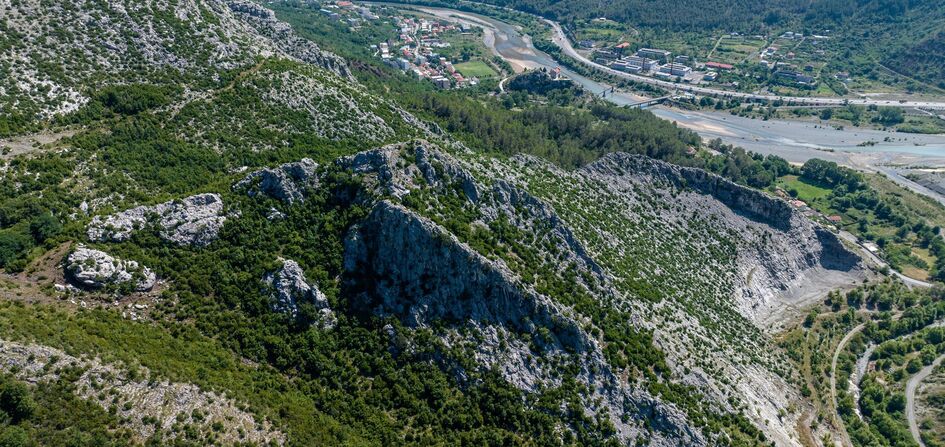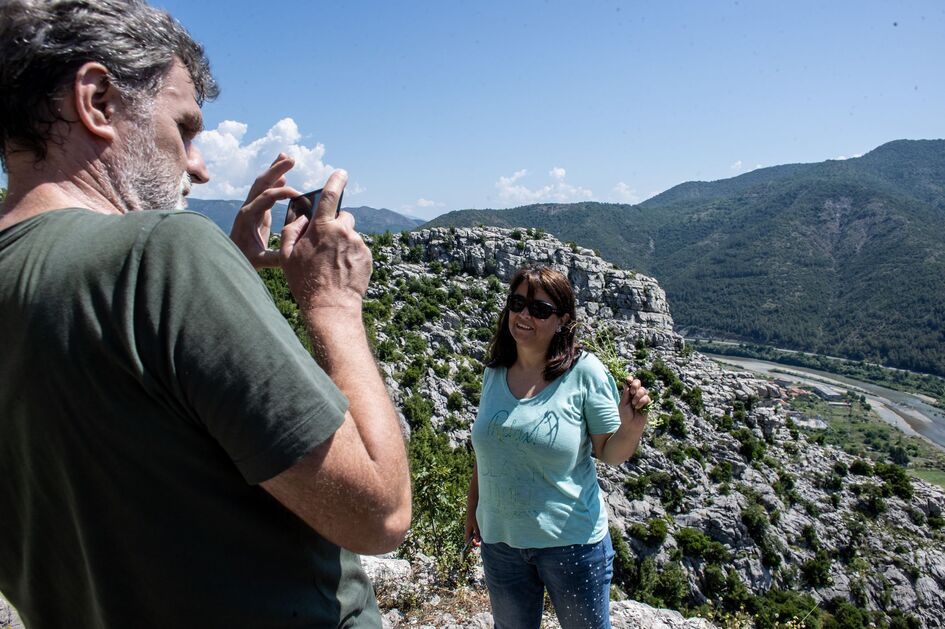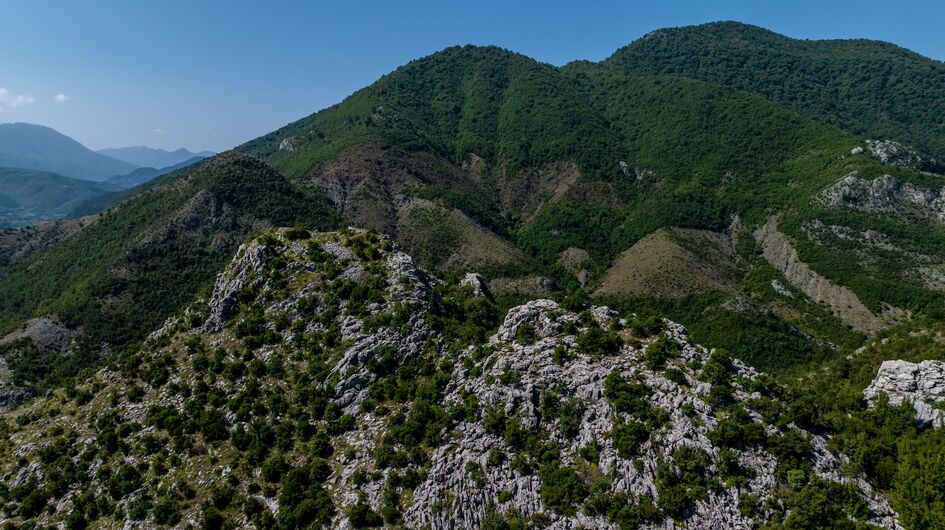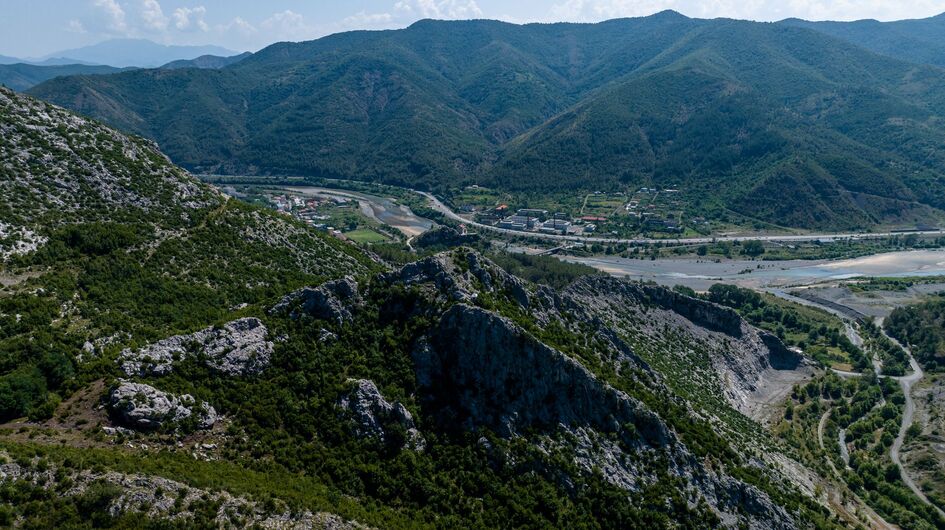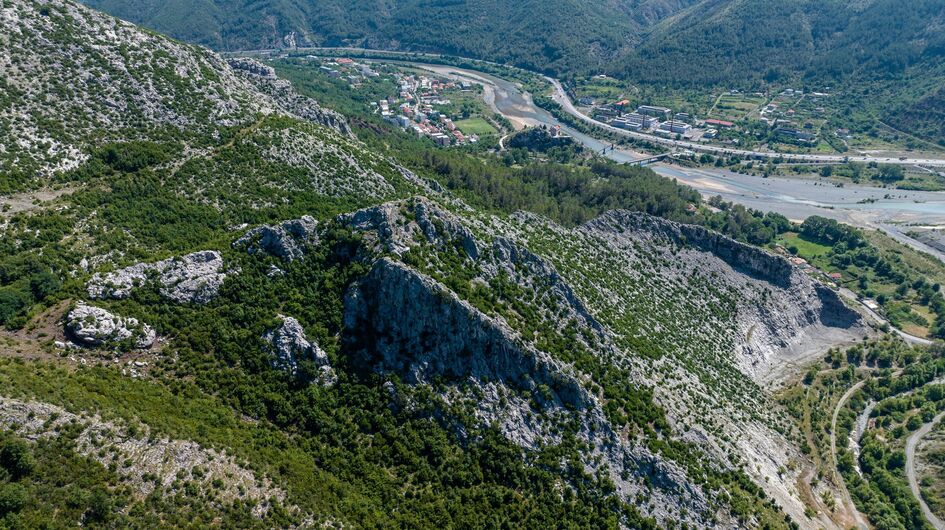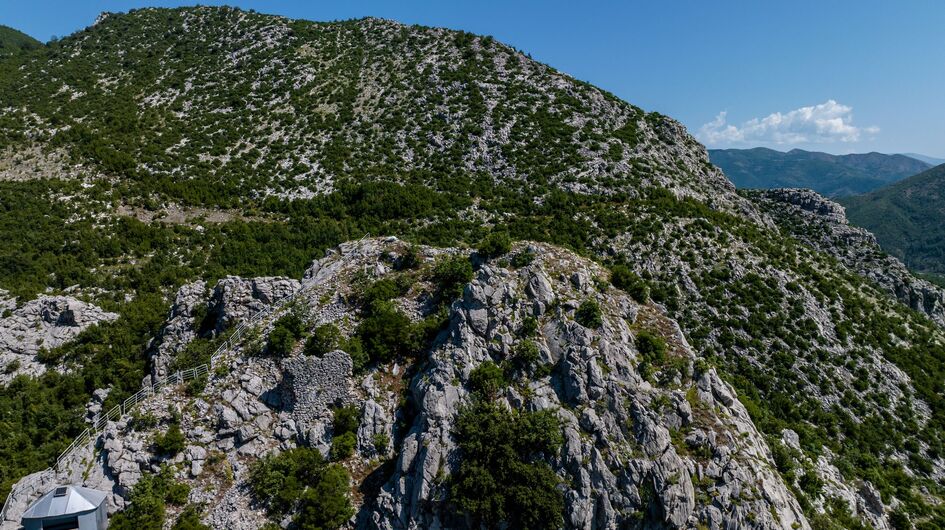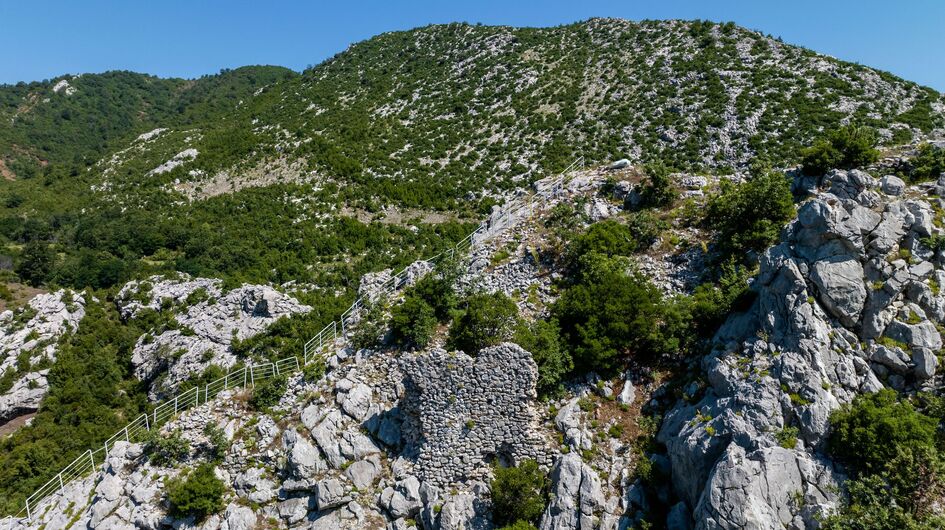MATRIZA CASTLE, RUBIK
Built in late antiquity, early c. VI, in the period of the Byzantine emperor of Illyrian origin, Justinian I. The Byzantine historian of the c. VI, Procopius of Caesarea, informs us that Justinian (527-565) built or rebuilt 58 fortifications in New Epirus and 36 in Old Epirus, a good part of which are found in our country.
In the book "On constructions", he mentions, among other things, "castrum Matris", as one of the forts that was built at the beginning of the 6th century by Justinian I in New Epirus, to protect himself from the barbarian floods. Rubik's Castle it guards the mouth of the small river called Rubik, which originates in the mountain of Zhupa and flows into the river Fana in the town of Rubik.
The fort is located on the northern bank of the river. On the southern bank, at almost the same height, there is another medieval fortification guarding the mouth of the river. So the early road that passed here and connected Lezha with the interior of Albania towards the east, up to Prizren and beyond was fortified.
In the Middle Ages, the area of Rubik was surrounded by several castles (fortifications), which had a protective and controlling function. According to Dhimitër Shuterić, in front of the Matriza castle at almost the same height, there was also another medieval castle (which is also mentioned by Father Domeniko Pasi, who visited the Albanian highlands at the end of the 19th century). Even in Rrasfik there is a fortification that is popularly known as "Skënderbeu Tower", which is mentioned by Marin Barleti in the work "Historia e Skënderbeu".
This function was also performed best by the Redemption Church, which was fortified in that period. In Rrasfik, Skanderbeg had a tower that manufactured gunpowder, which he used during the wars in these parts. There was also a line that carried water to the gunpowder tower.
Based on historical sources, the Rubik's Matrix Castle has served as a key point of support in Skanderbeg's military actions in this area. Matriza Castle has had a protective and controlling function, since in the river valleys that extend to its east there are many villages, with a dense population for the medieval period.
In the Middle Ages, the area of Rubik was surrounded by several castles (fortifications), which had a protective and controlling function.
Based on historical sources, the Rubik's Matrix Castle has served as a key support point in Skanderbeg's military actions in this area. Matriza Castle has had a protective and controlling function, since in the river valleys that extend to its east, there are many villages, with a dense population for the medieval period.
